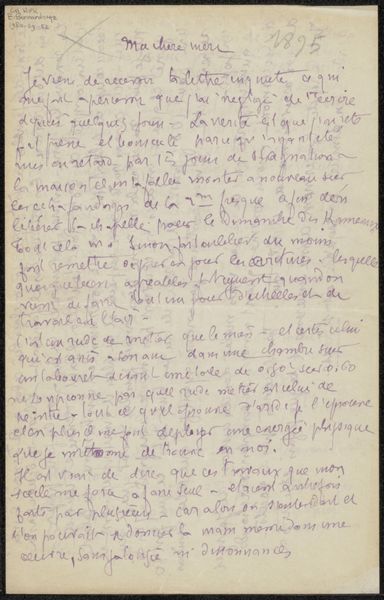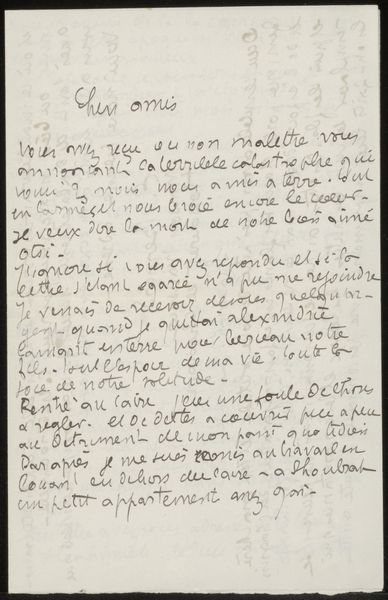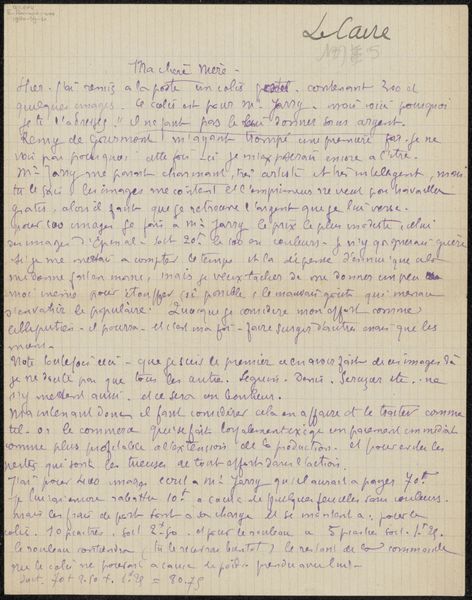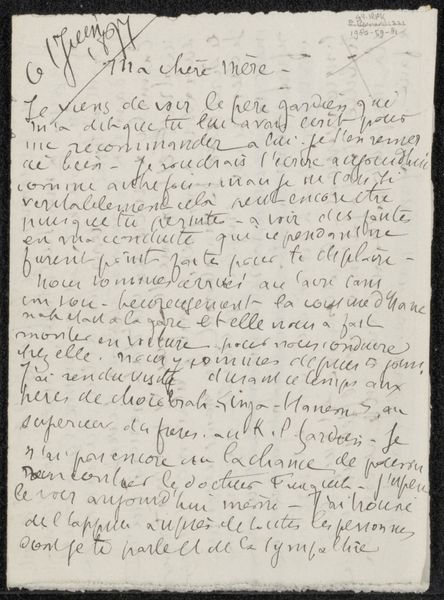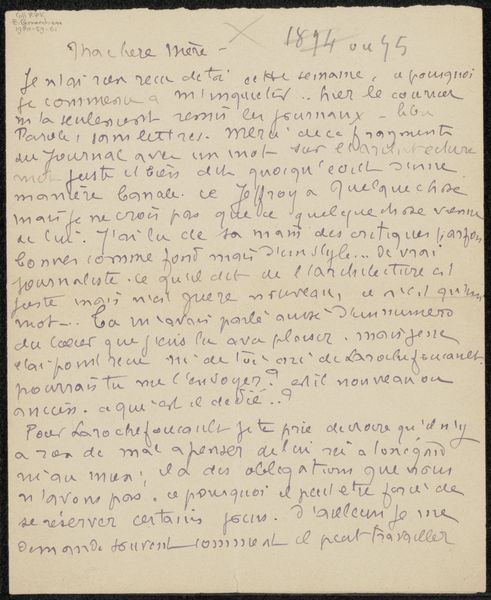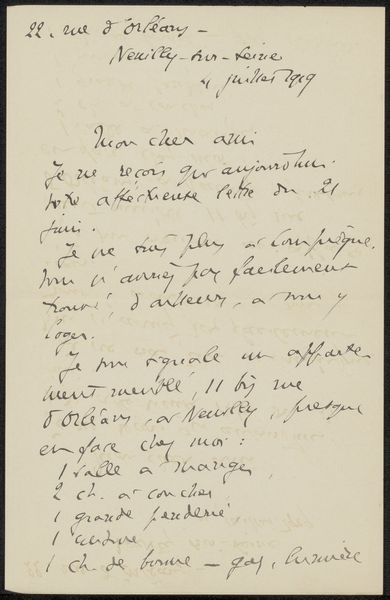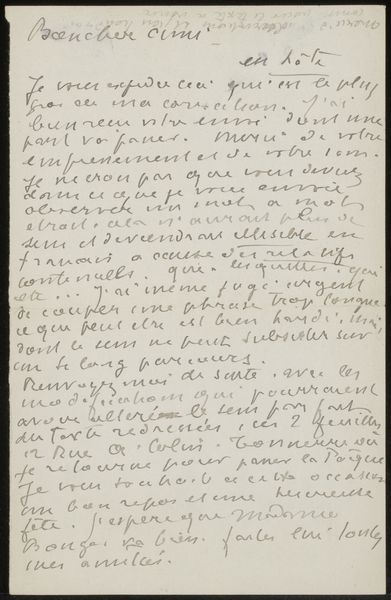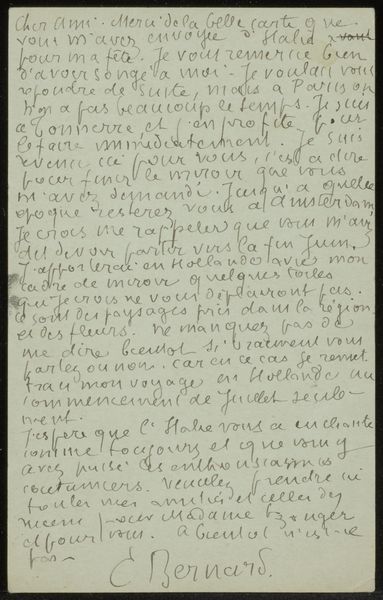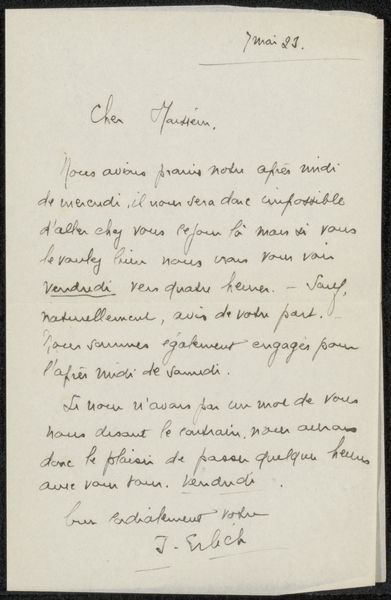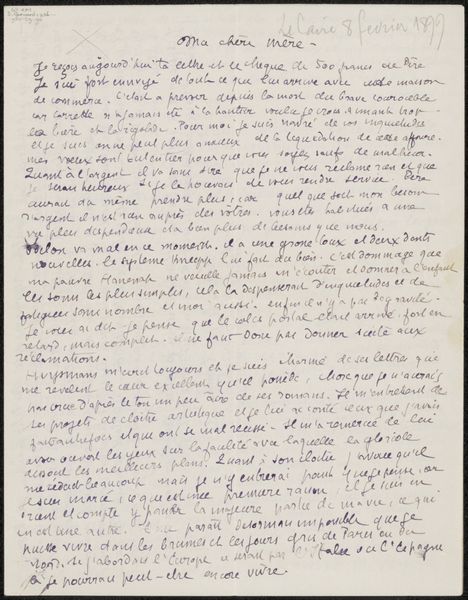
drawing, paper, ink
#
drawing
#
paper
#
ink
Copyright: Rijks Museum: Open Domain
Curator: This piece invites us into the intimate world of artist Emile Bernard, dating back to before 1898. It's a letter, "Brief aan Andries Bonger," meticulously rendered in ink on paper. A glimpse into a private correspondence. What's your first impression? Editor: The first thing that strikes me is the density, almost an urgency, in the handwriting. It feels immediate, heartfelt, spilling over with emotion. It gives the impression that the words just barely make it onto the page, before he has even more to say. There’s something restless and alive in that intensity. Curator: The handwriting certainly does reveal character. Bernard was a complex figure, both innovative and plagued by inner turmoil. Letters like this offer valuable insight into his emotional landscape and relationships. Notice the address at the top: Carrera de Darro, Granada, Spain. This tells us something about his location and state of mind at the time. Editor: Absolutely, and the address itself could be symbolic. The "Carrera de Darro" - Darro’s path - with its implications of journey, possibly reflecting a quest for inspiration or healing away from familiar lands? It might even be meant ironically, a symbolic reference to someone who hasn't truly found the right road. The images the writing creates is interesting, though: sun, light, and the "doors of the convent." Are we looking at a yearning for spiritual solace? Curator: Perhaps, or a deeper sense of conflict. Remember that Bernard oscillated between avant-garde circles and religious themes. The sun and light could represent clarity, while the convent doors hint at restraint or escape. The letter appears to express longing, regret at lost visions and past guilts—"those cruel ones." His soul may have been a contested territory. Editor: It makes me wonder about the recipients' interpretation, of what Bonger saw in it at the time. Considering its date and medium – ink on paper - what do you consider to be the most powerful symbolic component of this “Brief”? Curator: It has to be the act of writing itself. In a world increasingly saturated with ephemeral digital communication, this handcrafted document holds a powerful symbolic value. This is a tangible connection across time, a shared piece of someone's inner world, full of vulnerability and raw human experience. A perfect picture of what artistic letters really were. Editor: Exactly, a handwritten letter encapsulates time and place. In the future this will surely offer scholars even more layers to unpack, more symbols and signs to interpret, making us pause and reconsider Bernard and the meanings imbued within this brief correspondence.
Comments
No comments
Be the first to comment and join the conversation on the ultimate creative platform.

